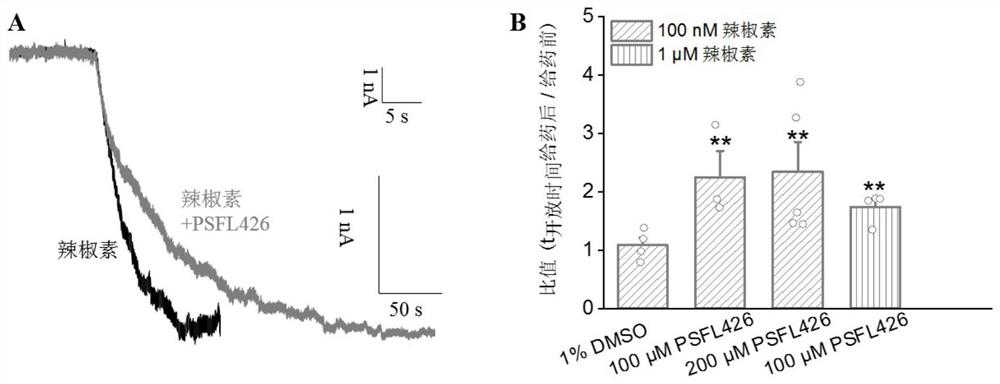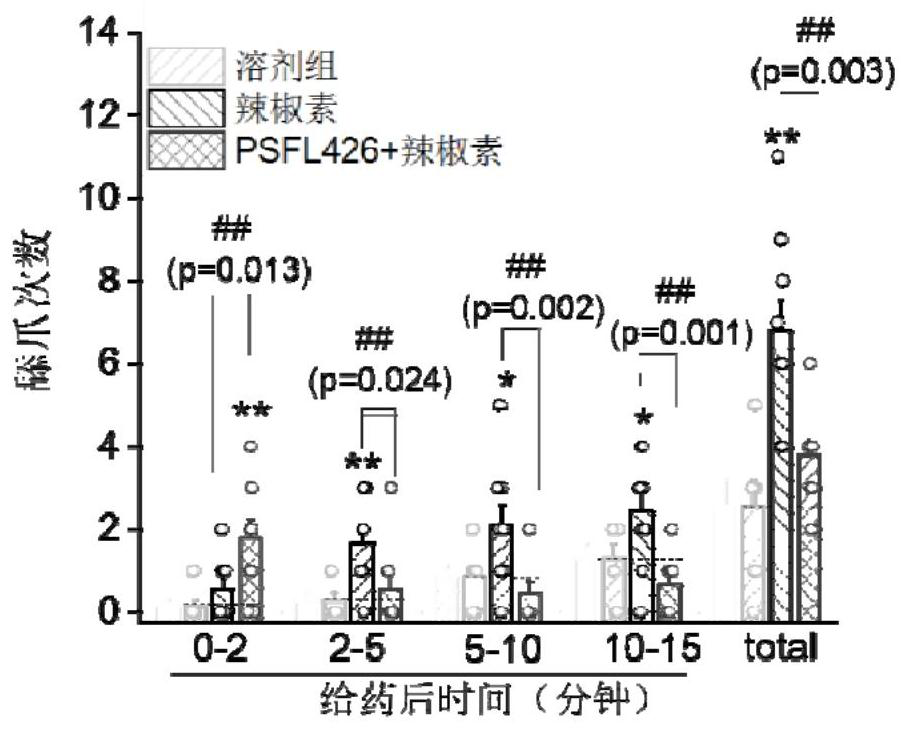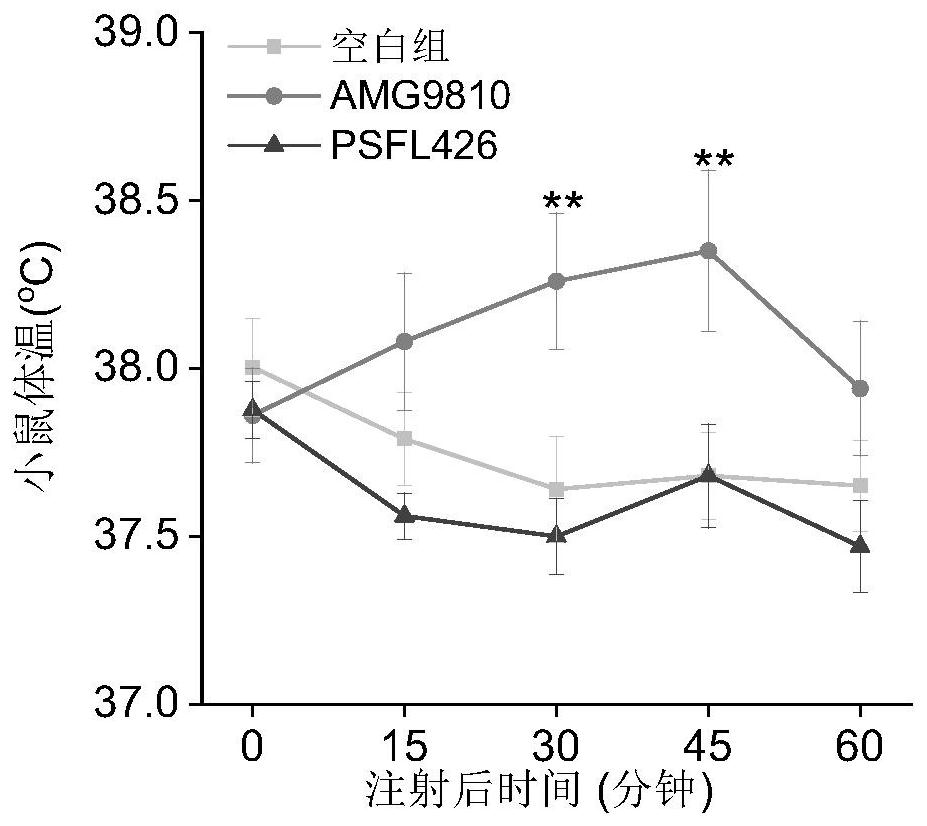Application of TRPV1 channel targeting micromolecule
A technology of small molecules and channels, which is applied in the application field of TRPV1 channel targeting small molecules, can solve the problems of thermoregulation and maintenance function interference, etc., and achieve the effects of reducing the risk of side effects, significant analgesic effect, and rapid analgesic effect Effect
- Summary
- Abstract
- Description
- Claims
- Application Information
AI Technical Summary
Problems solved by technology
Method used
Image
Examples
Embodiment 1
[0024] Example 1: The delayed effect of small molecule PSFL426 on the activation of TRPV1 channel by capsaicin
[0025] 1. Experimental materials:
[0026] Plasmid: pFROG-TRPV1;
[0027] Cell line: HEK293 (human embryonic kidney cells);
[0028] Transfection reagents: Common chemical reagents required for calcium transfection reagents were purchased from Sigma-Aldrich.
[0029] 2. Experimental equipment:
[0030] Electrode puller and polisher were from Narishige; patch clamp digital-to-analog converter Digidata1440A, amplifier Axon 200B, membrane current recording software pCLAMP10.6 and analysis software Clampfit10.6 were purchased from Axon; inverted microscope IX51 and fluorescent light source U-RFL- Both T were purchased from Olympus; Microcontroller MC1000e was purchased from Siskiyou.
[0031] 3. Experimental reagents:
[0032] (1) Capsaicin;
[0033] (2) small molecule PSFL426;
[0034] (3) extracellular fluid:
[0035]
[0036] Adjust the pH to 7.4 with tris...
Embodiment 2
[0046] Example 2: Alleviating effect of small molecule PSFL426 on capsaicin-induced pain
[0047] 1. Experimental animals: C57BL / 6 male mice.
[0048]The mice were kept in a ventilated experimental cage with a body weight of 20±2g. Breeding temperature is about 23°C; normal day and night alternation; all experimental animals drink water and eat freely; purchased experimental animals are raised in this laboratory for 3 to 5 days to adapt to the experimental environment; all animal experiments are carried out between 8:00 and 18:00.
[0049] 2. Experimental equipment:
[0050] Electronic balance, cage ventilation system, microinjectors and polyethylene laboratory cages.
[0051] 3. Experimental reagents:
[0052] Capsaicin, small molecule PSFL426, DMSO, Tween 80 and sodium chloride injection.
[0053] 4. Experimental method:
[0054] Before the start of the experiment, the mice were put into the experimental polyethylene cage to familiarize themselves with the environment f...
Embodiment 3
[0057] Example 3: Effects of small molecule PSFL426 on the maintenance and regulation of body temperature in mice
[0058] 1. Experimental animals: C57BL / 6 male mice.
[0059] The mice were kept in a ventilated experimental cage with a body weight of 20±2g. Breeding temperature is about 23°C; normal day and night alternation; all experimental animals drink water and eat freely; purchased experimental animals are raised in this laboratory for 3 to 5 days to adapt to the experimental environment; all animal experiments are carried out between 8:00 and 18:00.
[0060] 2. Experimental equipment:
[0061] Electronic balance, cage ventilation system, micro injector and thermocouple thermometer body temperature measuring instrument.
[0062] 3. Experimental reagents:
[0063] Small molecule PSFL426, AMG9810, DMSO, Tween 80 and sodium chloride injection. Among them, AMG9810 is a TRPV1 channel-targeted small molecule, which has also shown excellent analgesic effects in animal exper...
PUM
 Login to View More
Login to View More Abstract
Description
Claims
Application Information
 Login to View More
Login to View More - R&D
- Intellectual Property
- Life Sciences
- Materials
- Tech Scout
- Unparalleled Data Quality
- Higher Quality Content
- 60% Fewer Hallucinations
Browse by: Latest US Patents, China's latest patents, Technical Efficacy Thesaurus, Application Domain, Technology Topic, Popular Technical Reports.
© 2025 PatSnap. All rights reserved.Legal|Privacy policy|Modern Slavery Act Transparency Statement|Sitemap|About US| Contact US: help@patsnap.com



